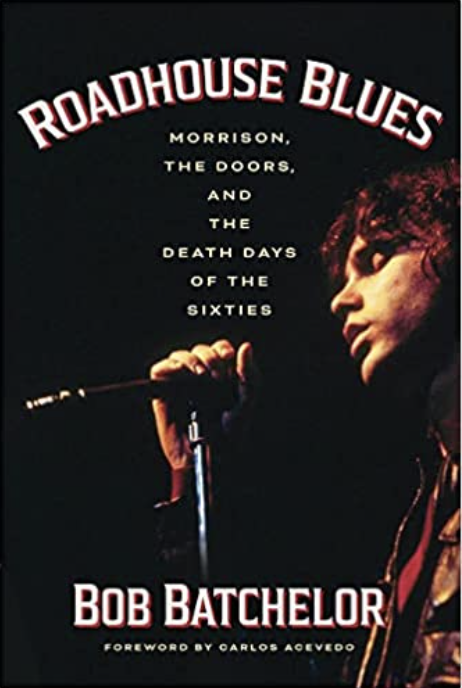West Meets East When Doors Play Big Apple Shows, March 1967
New York City loved the Doors!
A handbill for the Doors concerts at Ondine!
After two early trips East to play New York City’s famous Ondine nightclub — well before they were famous — the Doors returned in March 1967 to a series of shows running through early April that would establish them as a favorite of fans and critics. The spark they received was a launchpad, especially in the dark days after “Break On Through” had been released (and fizzled on the pop charts) and prior to the national sensation that became “Light My Fire.”
On the third trip to NYC, the Doors intensified their mysticism and mystery for the celebrities and fame junkies that assembled at Ondine. While they had mainly been an underground hit on the two previous residencies, this time the press showed up too, eager to find out more about the psychedelic sounds emanating from Los Angeles and the beautiful singer who fronted the darkness.
Jim Morrison played up the differences between the coasts, which magnified his aura. As always, he spoke in proto-hippie lingo, but under a layer of foreboding. His words were sensuous and of the earth — heat, dirt, its elemental foundations.
“We are from the West. The world we suggest should be of a new Wild West. A sensuous, evil world. Strange and haunting…the path of the sun, you know.” — Jim Morrison
THE ONDINE AND NEW YORK HIPSTERS
The Ondine was a tiny club in Manhattan on Fifty-Ninth Street where celebrities and the city’s elite went to let loose. The hippest person on the scene was Andy Warhol, accompanied by his many acolytes and hangers-on — the beautiful people — but others included Jackie Kennedy, Jackie Gleason, and a horde of models, actors, and glam devotees.
The Ondine basically operated as a private discotheque long before disco would become all the rage. The raw environment brought together the rich, the wannabees, and others in a kind of fashionable speakeasy featuring go-go dancers, frenzied dance music, and an outrageous cast of characters. The basement locale was an odd place for ritzy socialites, basically tucked under a bridge in an ominous part of the city just three blocks from the East River. Similar to London Fog (where the Doors played in LA and created their famous sound), the club, named after the famous racing yacht Ondine, had a cramped stage that contrasted with its nautical theme.
The location of the Ondine nightclub today via Google Maps (March 2023)
Club manager Brad Pierce had been instrumental in getting the Doors booked for those early shows. Warhol later claimed that the band had gotten its break because a female deejay who had moved from LA knew the guys and urged Pierce to bring them east. To New York audiences, the Doors were billed as the hottest underground band in the nation and the LA connection helped establish that credibility. Enough people were bicoastal and had heard whispers about the group.
Everyone wanted to see the lead singer.
Of course, Jim met Warhol at the first run of shows. The iconic artist was reportedly so nervous about the encounter that he spent an evening mumbling to himself and awkwardly avoiding the singer. Eventually Warhol overcame his stage fright, probably at the sight of so many women mobbing Morrison while he stood at the bar between sets. “It was love at first sight on Andy’s part,” Ray said later.
BREAK ON THROUGH
Journalist Richard Goldsten took notice of the Doors and urged listeners to give the debut album a spin.
“Their initial album, on Elektra, is a cogent, tense, and powerful excursion. I suggest you buy it, slip it on your phonograph, and travel on the vehicle of your choice,” he explained. “The Doors are slickly, smoothly, dissonant. With the schism between folk and rock long since healed, they can leap from pop to poetry without violating some mysterious sense of form.”
From Goldstein’s perspective, the reason for the band’s success was its foundation in the blues. “This freedom to stretch and shatter boundaries make pretension as much a part of the new scene as mediocrity was the scourge of the old,” Goldstein wrote. “It takes a special kind of genius to bridge gaps in form. Their music works because its blues roots are always visible. The Doors are never far from the musical humus of America — rural, gut simplicity.”
What few could have imagined was that the Doors were on the verge of superstardom!
The band had seized the rippling current running through the Sixties, sucking in the joy and the darkness and spitting it out at audiences in a way that left listeners jubilant with the promise of good and bad, light and evil. The shows at the Ondine would be the last stretch before “Light My Fire” changed the band forever.
If the music pushed you hypnotically toward the edge of a cliff, Morrison stood ready to push. But you also felt that he was ready to jump too, plunging into worlds and universes unknown.
Roadhouse Blues: Morrison, the Doors, and the Death Days of the Sixties by cultural historian and biographer Bob Batchelor







